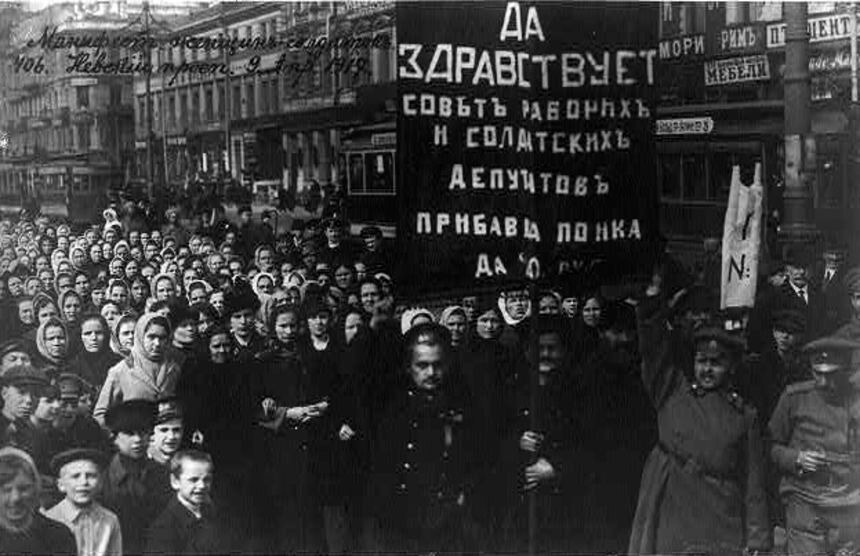Updated January 18, 2023
About Russian Revolution
The Russian Revolution was a prominent political and social event in Russia in 1917. It led to the overthrow of the Tsarist autocracy and the establishment of a socialist state. It ended the Romanov dynasty and centuries of Russian Imperial rule. The revolution was by the Bolshevik Party, which Vladimir Lenin led. It was motivated by various factors, including economic inequality, political oppression, and the effects of World War I.
(Image Credit: Education. National Geographic)
Roots of the Russian Revolution
The Russian Revolution originated in the late nineteenth and early twentieth centuries when Russia underwent rapid industrialization and social change. The Tsar, Nicholas II, an autocrat with absolute power, ruled the country. However, the Tsar’s rule was caused by widespread poverty, political repression, and widespread discontent among the Russian people.
Factors Contributing to the Russian Revolution
The country’s involvement in World War I was one of the significant factors that led to the Russian Revolution. Russia entered the war in 1914 and quickly became bogged down in a series of costly and bloody battles. The war significantly strained the Russian economy and society, leading to widespread food shortages, inflation, and social unrest. The Tsar’s decision to take individual command of the Russian military was a failure, too, as he was ill-equipped to lead the war effort, and the Russian army suffered a string of crushing defeats.
Another factor that contributed to the Russian Revolution was the widespread discontent among the Russian people, particularly the working class and peasants. Many Russians were impoverished and had too harsh working conditions and fed up with the Tsar’s rule. The Bolshevik Party fueled this discontent. This Marxist political party advocated overthrowing the Tsarist regime and establishing a socialist state.
Course of the Russian Revolution
The Russian Revolution began in February 1917 when a wave of strikes and protests swept Russia. Various factors, including the war, food shortages, and the Tsar’s refusal to implement political reform, sparked these protests. The strikes quickly turned into a full-blown revolution. The Tsar surrendered in March 1917, and a provisional government had formed.
However, the provisional government needed help to address Russia’s problems. It soon faced opposition from various groups, including the Bolshevik Party. In November 1917, the Bolsheviks staged a coup known as the October Revolution. They seized power in Petrograd (now St. Petersburg). The Bolshevik leader, Vladimir Lenin, became the head of the new Soviet government.
Consequences
The Russian Revolution had far-reaching consequences for Russia and the world. It ended the Tsarist autocracy and the Romanov dynasty and established the Soviet Union, which became a significant global power. The revolution also significantly impacted the development of communist ideology and the spread of socialism worldwide.
However, the Russian Revolution had its problems and controversies. The Bolshevik regime was by widespread repression and human rights abuses. The country was in a civil war that lasted many years. The Soviet Union also faced significant economic challenges. It could not achieve the levels of prosperity and social equality envisioned by the revolutionaries.
The Soviet Union underwent several significant changes and developments in the years following the Russian Revolution. Under the leadership of Lenin and later Joseph Stalin, the Soviet Union underwent rapid industrialization and collectivization, becoming a major global superpower. However, these developments were caused by widespread repression and human rights abuses. The Soviet Union became a highly authoritarian and centralized state.
Conclusion
The 1917 Russian Revolution was a series of political and social events that resulted in the demise of the Tsarist autocracy and the establishment of a socialist state in Russia. It was motivated by various factors, including economic inequality, political oppression, and the effects of World War I. It was by the Bolshevik Party, led by Vladimir Lenin. The revolution began in February 1917 with a series of strikes and protests. It ended in November 1917 with the Bolshevik Party’s October Revolution. They seized power in Petrograd and established the Soviet Union.
The revolution had significant global consequences, including the spreading of communist ideology and the establishment of the Soviet Union as a significant global power. However, it also faced problems and controversies, including widespread repression and human rights abuses, a civil war, and economic challenges.

